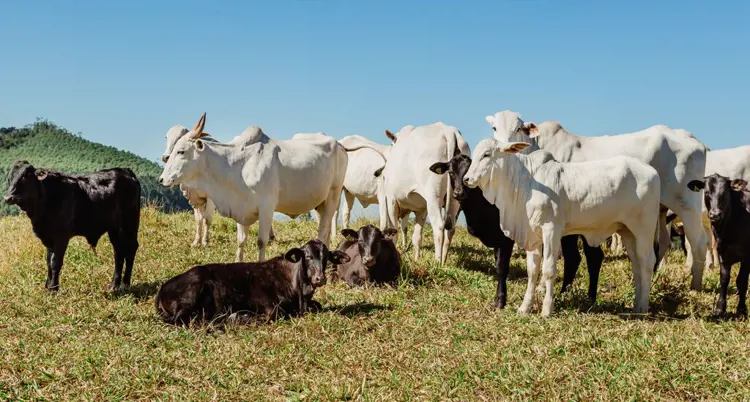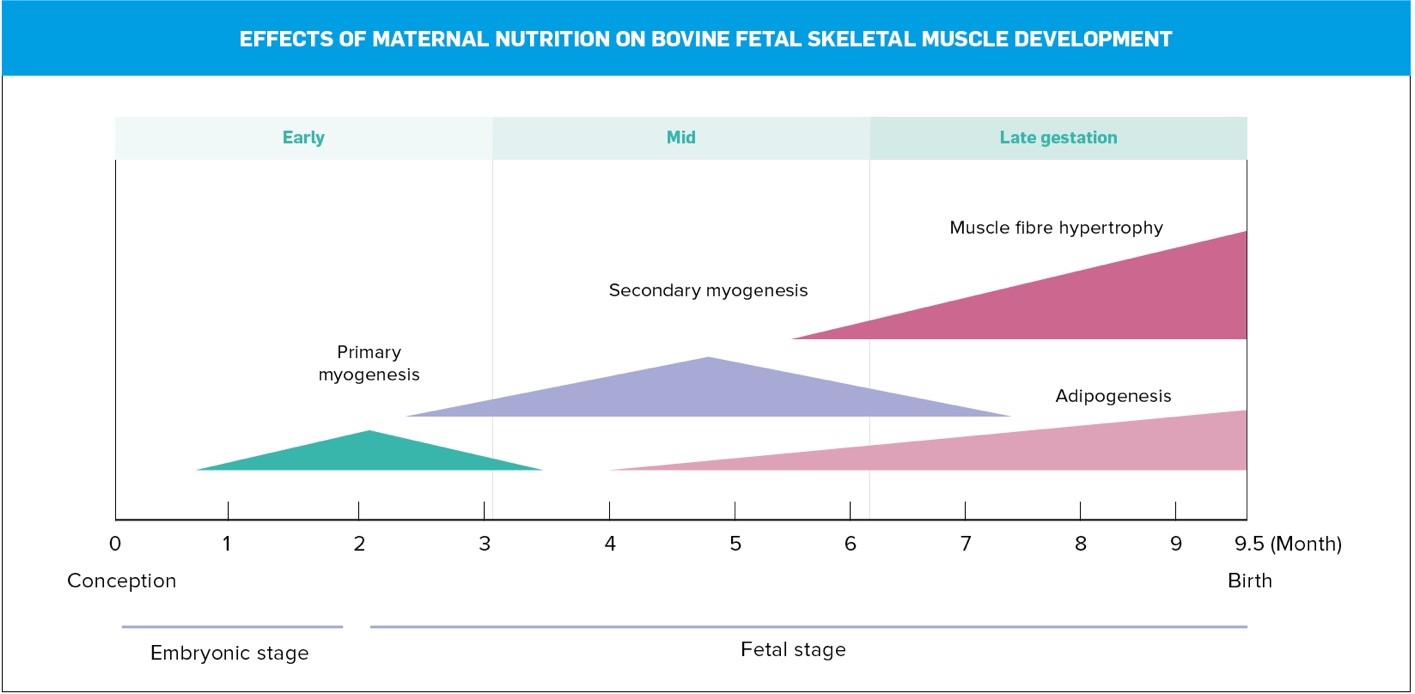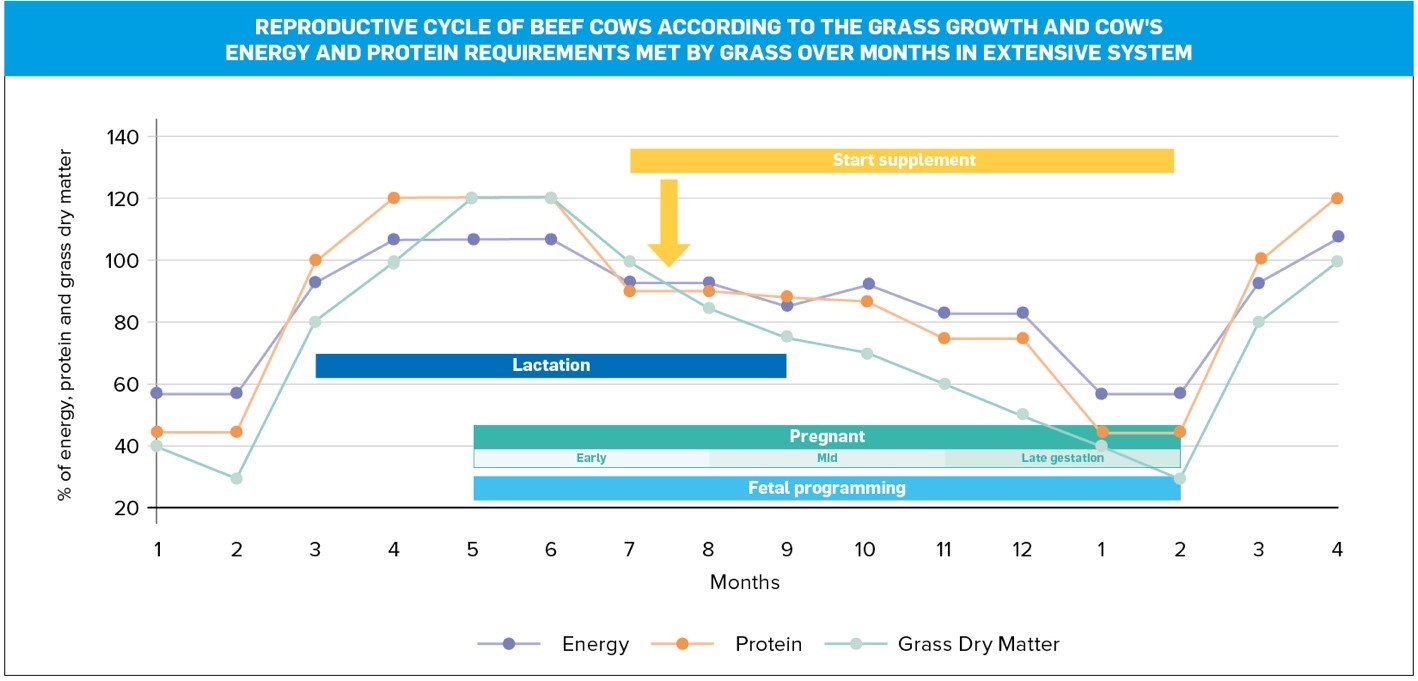Improve your results with the power of foetal programming
Cows have relatively low nutritional requirements during the first six months of pregnancy. About 75% of foetal growth occurs during the last two months of gestation. This is why farmers tend to pay the most attention to the last trimester of pregnancy, assuming this is when the cow’s nutrition has the biggest impact on fetal growth. However, this is a misconception. Every phase (early, mid and late) has a significant impact on foetal growth and you need to meet certain nutritional needs during each phase to optimise development.

What does foetal programming mean?
Foetal programming, also called developmental programming, refers to the entire period of pregnancy, which is split into three phases: early, mid and late gestation. The nutritional strategy you employ for the mother during each period has a big impact on the calf’s long-term growth and development.
The early phase of foetal development (the first 90 days after conception) can define the calf’s entire life, not only because the placenta experiences the most growth but also because this is when the main organs begin to form. If your cow doesn’t get enough nutrients during pregnancy, this will have follow-on effects on the placental formation and the calf’s organ development and future growth.
The good news is that the right nutrient supplementation improves foetal muscle development and adipogenesis, which enhances marbling. Primary myofibers form during the initial stage of myogenesis in embryonic development. The second wave of myogenesis in the foetal stage (from two months after conception until birth, see Figure) is when the secondary myofibers responsible for the presence of the total numbers of muscle fibres (hypertrophy) start to form. Postnatal muscle growth is mainly due to an increase in muscle fibre size (hyperplasia) without forming new muscle fibres.

How can I implement foetal programming?
Nutrient restriction during mid-pregnancy reduces the number of muscle fibres, whereas nutritional restriction during late pregnancy reduces both muscle fibre sizes and the formation of intramuscular adipocytes. The calves keep developing at the start of lactation. After two months with enough grass (dry matter) of sufficiently high quality (energy and protein), the cow can become pregnant (see Graph) in her next reproduction cycle.
During the late summer, grass becomes less available and the quality deteriorates, and the effects become apparent once the mother’s been pregnant for 2-3 months. From this stage, the grass can’t provide enough energy or protein for the cow (<100% requirement – see Graph). According to foetal programming, cows need nutritional supplementation during these months (see Graph) to maximise the calf’s growth development, meat quality, age of puberty, and fertility.

What can I expect from foetal programming?
By improving the mother’s nutrition, you’re unlocking higher growth potential for their calf. Given similar nutrition (see Table), beef calves whose mother received the right level of nutrition (100% of requirements met) during pregnancy gain over 10% more body weight after weaning until slaughter versus those with an underfed mother (< 60% nutrition requirements met)!

A tailor-made solution
Research shows the impact nutrition has on cows’ fertility and the growth of their calves during the next breeding season: this is known as foetal programming. By investing in a cow’s nutrition, you also improve the growth potential of your next generation, increasing live weight during all phases.
Our proven ReproBeef Plan brings together all these insights and more to help you optimise your herd’s reproductive efficiency, leading to higher earnings for you and your farm.
Learn more about ReproBeef or contact a member of the De Heus team for more information.